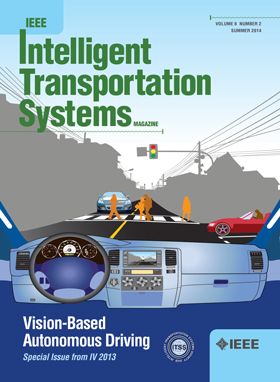Systematic Review of Single-Channel EEG-Based Drowsiness Detection Methods
IF 7.9
1区 工程技术
Q1 ENGINEERING, CIVIL
IEEE Transactions on Intelligent Transportation Systems
Pub Date : 2024-09-02
DOI:10.1109/TITS.2024.3442249
引用次数: 0
Abstract
Drowsiness is characterized by reduced attentiveness, commonly experienced during the transition from wakefulness to sleepiness. It can decrease an individual’s alertness, thereby increasing the risk of accidents during activities such as driving, crane operation, working in mining areas, and industrial machinery operation. The detection of drowsiness plays an important role in preventing such accidents. Numerous methods exist for drowsiness detection, including Subjective, Vehicle, Behavioral, and Physiological approaches. Among these, Physiological methods, particularly those utilizing Electroencephalogram (EEG) data combined with artificial intelligence, have proven effective in detecting drowsiness. These methods excel in capturing physiological changes in the body during drowsiness and the potential for gathering information from the human brain during this state. EEG data-based Brain-Computer interface (BCI) systems have been popular for detecting drowsiness. Single-channel EEG signal analysis BCIs have been highly preferred for their ease and convenient usage in real-time applications. While some progress has been made in the single-channel EEG BCI, substantial progress is still needed. This paper provides a state-of-the-art analysis of recent developments in the single-channel EEG-based drowsiness detection methods. Ultimately, this review study explores potential avenues for the future development of single-channel EEG-based drowsiness detection.基于单通道脑电图的嗜睡检测方法的系统回顾
嗜睡的特点是注意力下降,通常发生在从清醒到困倦的过渡时期。嗜睡会降低人的警觉性,从而增加在驾驶、起重机操作、矿区工作和工业机械操作等活动中发生事故的风险。嗜睡检测在预防此类事故中发挥着重要作用。嗜睡检测有许多方法,包括主观方法、车辆方法、行为方法和生理方法。其中,生理方法,尤其是利用脑电图(EEG)数据与人工智能相结合的方法,已被证明能有效检测嗜睡状态。这些方法擅长捕捉嗜睡时人体的生理变化,以及在这种状态下从人脑收集信息的潜力。基于脑电图数据的脑机接口(BCI)系统在嗜睡检测方面很受欢迎。单通道脑电信号分析 BCI 因其在实时应用中的易用性和便捷性而备受青睐。虽然单通道脑电生物识别(BCI)技术已经取得了一些进展,但仍需取得实质性进展。本文对基于单通道脑电图的嗜睡检测方法的最新发展进行了分析。最后,本综述研究探讨了基于单通道脑电图的嗜睡检测未来发展的潜在途径。
本文章由计算机程序翻译,如有差异,请以英文原文为准。
求助全文
约1分钟内获得全文
求助全文
来源期刊

IEEE Transactions on Intelligent Transportation Systems
工程技术-工程:电子与电气
CiteScore
14.80
自引率
12.90%
发文量
1872
审稿时长
7.5 months
期刊介绍:
The theoretical, experimental and operational aspects of electrical and electronics engineering and information technologies as applied to Intelligent Transportation Systems (ITS). Intelligent Transportation Systems are defined as those systems utilizing synergistic technologies and systems engineering concepts to develop and improve transportation systems of all kinds. The scope of this interdisciplinary activity includes the promotion, consolidation and coordination of ITS technical activities among IEEE entities, and providing a focus for cooperative activities, both internally and externally.
 求助内容:
求助内容: 应助结果提醒方式:
应助结果提醒方式:


